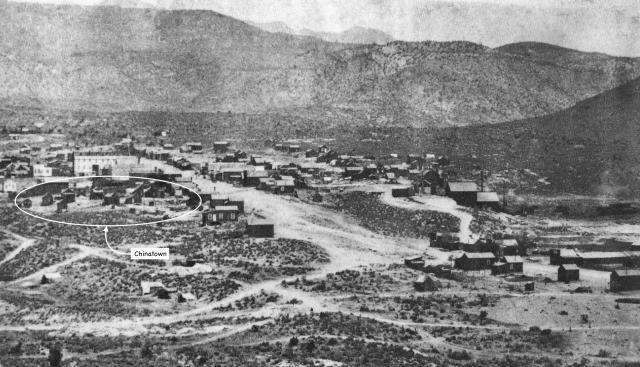Silver Reef Mining District
Silver Reef Mining DistrictJohn Kemple arrived in Harrisburg in 1866, and boarded at the Orson Adams House for the winter. Kemple was an experienced prospector, and in 1868 he found a mineralized sandstone float (an ore unattached to the bedrock) that assayed very high in silver, but he had a hard time pinpointing its source. He returned in 1870, and discovered silver in the White Reef, at the Southern base of Pine Valley Mountain. But because the silver was in sandstone, which at the time was considered impossible, assayers were skeptical of his findings, which slowed the process for locating the source of his supplies. In 1874, John Kemple took the lead in organizing a new mining district called the Harrisburg Mining District, and Orson B. Adams was elected president. The first claim recorded within this district, was only about 300 hundred yards southwest from the Orson Adams House and was named Pride of the West Ledge and Kemple Company. Two years later, by early 1876, a surge of silver fever took off, and miners, along with supporting industries, flowed into the area.With the closest railroad a 100 miles away in Milford, on-site transformation of silver ore into bullion was crucial. The nearest mills were more than 300 miles away, so it was decided to build mills near the mines, process the ore, and then ship finished bullion to the railroad by wagon. Three of the five mills were built in Silver Reef, with one in Leeds and the other on the Virgin River, named Stormont Mill. Mines that would not pay before the mills came were now considered valuable property. During 1876, Silver Reef was one of the largest towns in Washington County, with about 1,500 residents. A development boom took place along mile-long Main Street, including the construction of 6 saloons, 9 grocery stores, 2 dance halls, a brewery, a billiard hall, the Wells Fargo Express Office, a jail, and a church, amongst many others. St. John Catholic Church was Southern Utah’s first established Catholic congregation, founded in 1879, which housed the town’s hospital in a rear wing. Only remnants of the church can still be seen. Town advocates wanted Silver Reef to become the county seat, but the more conservative citizens of neighboring towns, established by members of the LDS church, were against it. As a typical boomtown, Silver Reef grew as quickly as it dwindled down. Reduced operations continued through 1909, after which mining completely stopped, and livestock owners took their place. When the town went extinct, neighboring town residents borrowed the leftover buildings and took the materials for their own use.
Phone
Geographic Coordinates
Directions
From St. George- Take I-15 N. to S. Main St. Take exit 22 from I-15 N. Then Follow S Main St to Silver Reef Rd, Follow the signs for Silver Reef.


